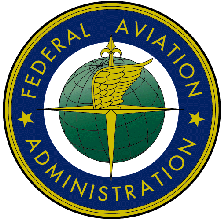Fri, Jan 10, 2003
 The U.S. Department of Transportation's Federal
Aviation Administration (FAA) just announced that El Salvador
complies with international safety standards set by the
International Civil Aviation Organization (ICAO) and has given the
country a Category 1 rating following a reassessment of its civil
aviation authority. El Salvador was previously rated Category
2.
The U.S. Department of Transportation's Federal
Aviation Administration (FAA) just announced that El Salvador
complies with international safety standards set by the
International Civil Aviation Organization (ICAO) and has given the
country a Category 1 rating following a reassessment of its civil
aviation authority. El Salvador was previously rated Category
2.
Inspectors from the FAA Flight Standards International Field
Office, located in Miami, FL, worked closely with the Central
American Aviation Safety Agency in providing technical resources to
help El Salvador take the actions necessary to meet its ICAO
obligations.
This announcement is part of the FAA's International Aviation
Safety Assessment (IASA) program, under which the agency assesses
the civil aviation authorities of all countries with air carriers
that operate to the United States and makes that information
available to the public.
 The
assessments are not an indication of whether individual foreign
carriers are safe or unsafe. Rather, they determine whether or not
foreign civil aviation authorities (CAA) are meeting ICAO safety
standards, not FAA regulations.
The
assessments are not an indication of whether individual foreign
carriers are safe or unsafe. Rather, they determine whether or not
foreign civil aviation authorities (CAA) are meeting ICAO safety
standards, not FAA regulations.
Countries with air carriers that fly to the United States must
adhere to the safety standards of ICAO, the United Nations'
technical agency for aviation that establishes international
standards and recommended practices for aircraft operations and
maintenance.
The FAA, with the cooperation of the host civil aviation
authority, assesses countries with airlines that have operating
rights to or from the United States or have requested such
rights.
Specifically, the FAA determines whether a foreign civil
aviation authority has an adequate infrastructure for international
aviation safety oversight as defined by ICAO standards. The basic
elements that the FAA considers necessary include:
- laws enabling the appropriate government office to adopt
regulations necessary to meet the minimum requirements of
ICAO;
- current regulations that meet those requirements
- procedures to carry out the regulatory requirements
- air carrier certification, routine inspection, and surveillance
programs, and
- organizational and personnel resources to implement and enforce
the above.
The FAA has established two ratings for the status of these
civil aviation authorities at the time of the assessment: (1) does
comply with ICAO standards, (2) does not comply with ICAO
standards.
More News
Pilot Applied Full Aft Stick And Nose-Up Trim, But The Airplane Remained On The Runway Analysis: The pilot reported that a preflight inspection and flight control checks revealed n>[...]
A Few Questions AND Answers To Help You Get MORE Out of ANN! 1) I forgot my password. How do I find it? 1) Easy... click here and give us your e-mail address--we'll send it to you >[...]
From 2022 (YouTube Edition): Before They’re All Gone... Humankind has been messing about in airplanes for almost 120-years. In that time, thousands of aircraft representing i>[...]
Advanced Air Mobility (AAM) A transportation system that transports people and property by air between two points in the NAS using aircraft with advanced technologies, including el>[...]
Aero Linx: MQ-1B Predator The MQ-1B Predator is an armed, multi-mission, medium-altitude, long-endurance remotely piloted aircraft that is employed primarily as an intelligence-col>[...]
 NTSB Final Report: Douglas A-4K
NTSB Final Report: Douglas A-4K ANN FAQ: Q&A 101
ANN FAQ: Q&A 101 Classic Aero-TV: PBY Catalina--From Wartime to Double Sunrise to the Long Sunset
Classic Aero-TV: PBY Catalina--From Wartime to Double Sunrise to the Long Sunset ANN's Daily Aero-Term (07.01.25): Advanced Air Mobility (AAM)
ANN's Daily Aero-Term (07.01.25): Advanced Air Mobility (AAM) ANN's Daily Aero-Linx (07.01.25)
ANN's Daily Aero-Linx (07.01.25)




